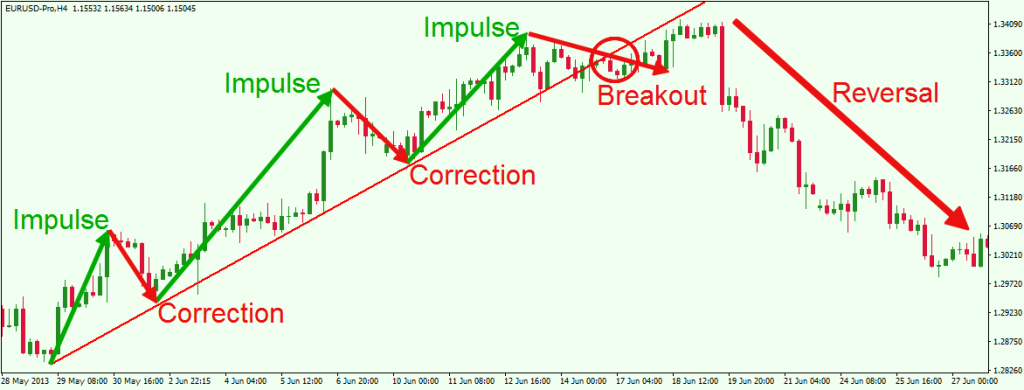Introduction

Image: www.dailyfx.com
The world of finance witnesses a captivating interplay of interconnected markets, where changes in one realm ripple through countless others. Amidst this intertwined financial tapestry, the stock market and forex trading stand out as pillars of global economic activity. In this detailed exploration, we will delve into how the ebbs and flows of these markets profoundly influence and shape each other, creating opportunities for astute investors and traders alike.
Setting the Stage: Stock Market and Forex Trading
The stock market serves as a hub where companies raise capital by issuing shares, representing ownership in their businesses. As investors buy and sell these shares, their collective actions determine stock prices. These price movements, in turn, can have far-reaching implications for businesses, investors, and the overall economy.
On the other side of the financial landscape, forex trading involves the exchange of currencies between different countries. As international trade and investment flow between nations, so too do their currencies, creating a vibrant and complex global market. Traders seek to profit by speculating on currency value fluctuations, driven by factors such as economic data, political events, and central bank decisions.
Stock Market Influence on Forex Trading
The stock market exerts a substantial influence on forex trading through multiple channels:
Economic Indicators: Stock market performance serves as a barometer of economic health and sentiment. Strong stock markets often indicate robust economic growth, which can lead to increased demand for a country’s currency, potentially pushing it higher in value. Conversely, weak stock markets may signal economic challenges, dampening currency value.
Investment Flows: The stock market can influence currency exchange rates through its impact on investment flows. When investors are optimistic about a country’s economy and stock market prospects, they tend to invest more in that country’s assets, including its currency. This increased demand strengthens the currency’s value.
Carry Trade: Carry trade, a popular strategy among forex traders, involves borrowing in one currency at a low interest rate (usually a safe haven currency like the Swiss Franc) and investing in another currency offering higher interest rates. The profitability of carry trade hinges on favorable interest rate differentials between the two currencies. A positive stock market outlook can boost risk appetite, leading to increased carry trade activity and currency appreciation.
Currency Hedging: To reduce their exposure to currency fluctuations, multinational corporations often engage in currency hedging strategies. They might buy or sell futures or options contracts tied to specific currencies. Changes in the stock market can influence the attractiveness of these hedging activities, affecting the supply and demand dynamics in the forex market and, consequently, currency values.
Forex Trading Impacts on Stock Market
Equally noteworthy is how forex trading can influence the stock market, demonstrating the reciprocal nature of their interactions:
Uncertainty and Volatility: Sharp movements in currency values can infuse uncertainty into global markets, reverberating into the stock market. Volatile currency markets can stifle investor confidence, prompting them to reduce stock investments, leading to potential declines in stock prices.
Exchange Rate Pass-Through: When a country’s currency appreciates against others, it becomes less expensive to import goods and services from that country. This can favor companies with significant import-based expenses, enhancing their profit margins and potentially boosting their stock prices.
Currency Intervention: Central banks occasionally intervene in forex markets to influence currency values. Such interventions can be aimed at stabilizing or controlling exchange rates, impacting the stock market via changes in the investment climate.
Case Studies and Examples
To illustrate these dynamic interactions, consider the following examples:
Post-2008 Crisis: In the aftermath of the 2008 financial crisis, global stock markets plummeted, leading to a flight into safe haven currencies like the Swiss Franc and the Japanese Yen.
Brexit: The UK’s vote to leave the European Union (EU) in 2016 resulted in a sharp depreciation of the British Pound, reflecting uncertainty and diminished market confidence.
US-China Trade Tensions: Trade disputes between the United States and China have caused significant volatility in currency markets, with each nation’s currency depreciating and appreciating relative to the other.
Conclusion
The relationship between the stock market and forex trading is akin to a meticulously choreographed dance, where each market’s movements influence and intertwine with the other. Navigating these interconnected financial landscapes demands an astute understanding of the reciprocal interplay between them. By recognizing the impact of the stock market on forex trading and vice versa, investors and traders can make informed decisions to capitalize on opportunities and mitigate risks presented by the dynamic evolution of these global markets. As they continue to sway and shape each other, the stock market and forex trading remain inseparable threads in the fabric of global finance, presenting both fertile ground for potential gains and constant reminders of the intricate interconnectedness of our economic world.

Image: forextraininggroup.com
Stock Market To Move Forex Trading






